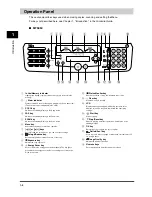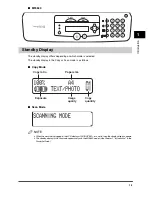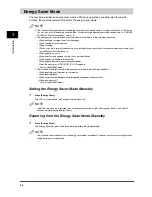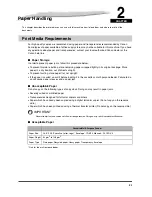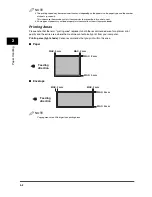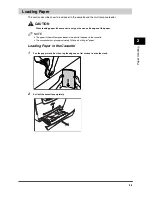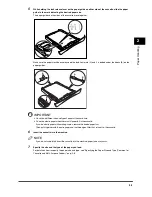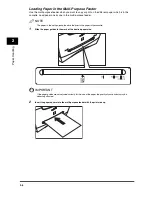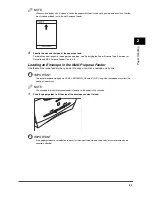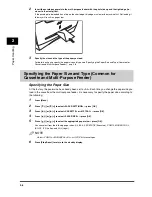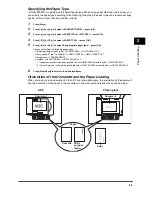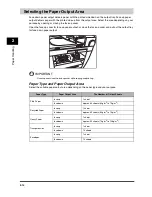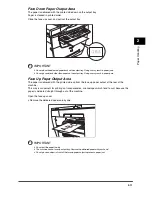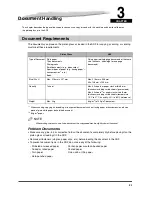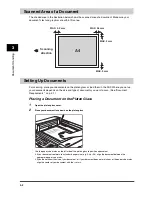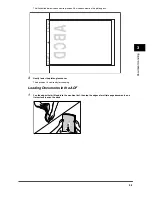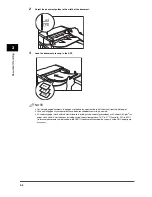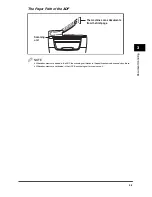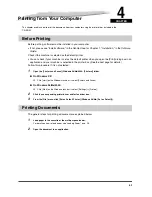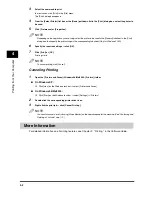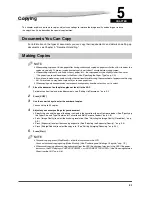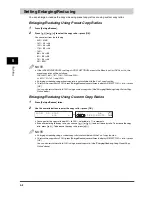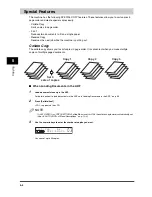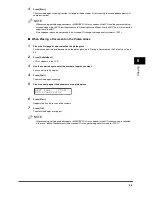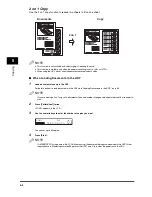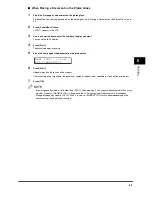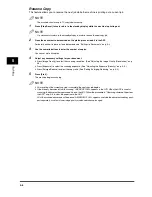
3-1
CHAPTER
3
Document Handling
This chapter describes the types of documents you can scan, copy or send with this machine and how to set them on
the platen glass or in the ADF.
Document Requirements
The documents you place on the platen glass or loaded in the ADF for copying, scanning, or sending
must meet these requirements:
*
1
When scanning, copying, and sending a transparent document such as tracing paper or transparencies, place a
piece of plain white paper behind the document.
*
2
80 g/m
2
paper
NOTE
When making copies of a small size document, the copy speed may be slightly slower than usual.
Problem Documents
•
Make sure any glue, ink, or correction fluid on the document is completely dry before placing it on the
platen glass or loading it in the ADF.
•
Remove all fasteners (staples, paper clips, etc.) before loading the document in the ADF.
•
To prevent document jams in the ADF, do not use any of the following:
Platen Glass
ADF
Type of Document
Plain paper
Thick documents
Photographs
Small documents (e.g., index cards)
Special types of paper (e.g., tracing paper*
1
,
transparencies*
1
, etc.)
Book
Plain paper (multiple page documents of the same
size, thickness, and weight or one page
documents)
Size (W x L)
Max. 216 mm x 297 mm
Max. 216 mm x 356 mm
Min. 148 mm x 105 mm
Quantity
1 sheet
Max. 30 sheets or paper stack within 8 mm
thickness including curled sheets (guaranteed)
Max. 50 sheets*
2
or paper stack within 8 mm
thickness including curled sheets (temperature:
15°C to 27°C, humidity: 20% to 80%) (reference)
Weight
Max. 2 kg
64 g/m
2
to 105 g/m
2
/document
- Wrinkled or creased paper
- Carbon paper or carbon-backed paper
- Curled or rolled paper
- Coated paper
- Torn paper
- Onion skin or thin paper
- Hole-punched paper

